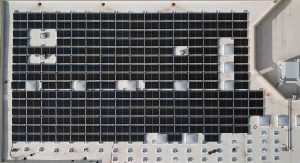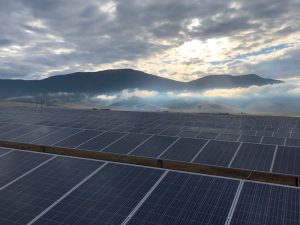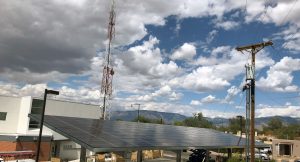Reduce Your Organizations' Bottom Line
In our service areas including Albuquerque, Santa Fe, and Taos; Sol Luna Solar works with businesses to implement more sustainable means for electricity consumption and energy generation. Many of these local commercial business are bound by the organizations’ utility energy cost structure and demand charges imposed by the local utility.
Demand Charges effect how the solar system will benefit the organization’s bottom line. While renewable energy can play a major role in developing the organization’s brand and environmental commitment; demand charges make it more difficult for the organization to realize the monetary benefits of solar PV. This is where battery storage plays a critical role in developing a well-rounded energy plan for the commercial business.
What are Demand Charges?
Demand charges are additional fees that are incurred by a majority of commercial customers and are based on the highest amount of energy (in kilowatts kW), used at any given time or over a designated period of time.
There is a logical reason why utilities implemented demand charges: The grid (your utility’s infrastructure), must be capable of accommodating the higher periods of energy demand in order to avoid a blackout. These demand charges help ensure the grid is maintained and large enough to handle peak use throughout the service area.
Storage Is Today’s Solution
Not long ago, there were very few options for commercial businesses to go solar when demand charges were in place. Customers had a more difficult time realizing the financial benefits of solar energy prior to the latest developments in commercial energy storage.
Today, organizations are able to utilize energy storage for specific demand reduction. High-tech software and battery based storage systems are now allowing commercial customers to offset demand charges by deploying stored energy during periods where energy is more costly and demand is higher.
Many of the new storage systems in the marketplace can run independent of solar PV and are available to commercial sites, independent of a solar system.
Stored energy can be utilized to provide power during periods of high demand. This is known as peak shaving and has been shown to offer substantial savings to commercial businesses. For brief periods where demand has spiked, customers can utilize relatively small batteries to offset the demand charge for these short peaks.
During periods of longer peak demand, larger batteries are needed to maintain the energy usage required to operate the facility during the higher peak demand period.
Solar PV For Commercial Use
Commercial solar provides lasting benefits to organizations in Albuquerque, Santa Fe, and Taos, New Mexico. Solar energy helps to reduce energy charges and allows the organization to hedge against the rising cost of electricity. On average electricity rates increase 3-4% per year. By producing energy independent of the utility, the organization reduces the amount of energy it needs to purchase from the utility for operations.
Solar can help to reduce a large part of the demand charges incurred by organizations.
Combining Solar and Energy Storage
Solar Energy production is considered a low-risk investment that has revolutionized the way we examine energy consumption for residential and commercial owners. As commercial energy storage becomes more adaptable to the marketplace, organizations will be able to reduce their facilities’ energy demand charges while providing a blueprint for other organizations to follow.
As battery prices continue to decline and utility rates increase, storage will make sense to more and more local businesses who experience demand charges during peak periods. By examining the organizations’ energy use profile and data, our team at Sol Luna Solar can help customers realize the benefits of energy harvest for demand reduction.





